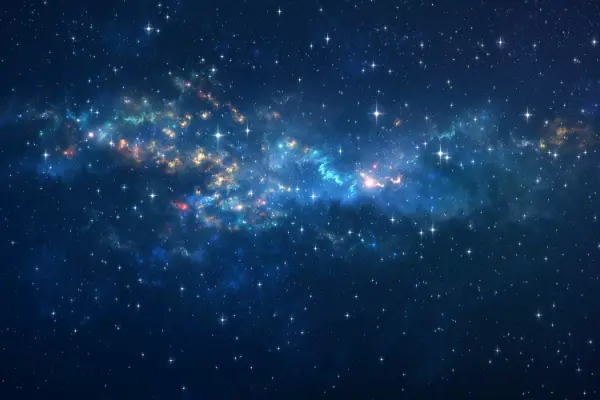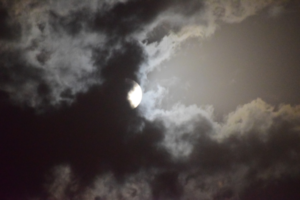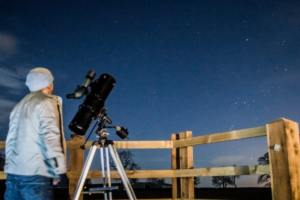How To Choose A Perfect Stargazing Location
Your own backyard will do just fine. Then, as you gain experience, escape from city lights into the darkness of the countryside.
While you can enjoy a good view from almost anywhere, not all spots are well-suited for stargazing. In fact, a mediocre vantage point can make it hard if not impossible to identify some of the trickier celestial bodies out there.
Best stargazing can be achieved only when the night is dark and dry, the sky is clear and there is no haze. Moreover, the environment should be pollution free. The speed of winds should also be low.
But how to find a good stargazing spot? Let’s take a closer look at the key aspects that make for a perfect stargazing spot:
Key Takeaways:
- Make sure there is least amount of light pollution at your chosen stargazing spot.
- Find a place that is higher/taller than the surrounding buildings.
- Pick the right time and weather conditions to go stargazing.
- Bring all the necessary telescope accessories, red flashlight, beach towel, binoculars, star maps/smartphone apps to the desired location.

1. Avoid Light Pollution
Light Pollution is the excessively obtrusive artificial light that can make the stargazing experience worse. Such light pollution has nothing to do with the moonlight; in fact, this is the artificial light that is contributed by humans. It is a sort of over illumination that can serve in the discomfort of stargazer.
2. Height Matters
In order to really get a glimpse of what’s in the sky, it’s important to find a place where buildings don’t obstruct your view. Rural areas are perfect, since they are usually much more sparsely populated and, therefore, feature fewer buildings overall.
But if you can’t go rural, at least go high. Climbing atop a tall building is a good way to mitigate the impact of other structures, so hunt down all the qualifying buildings in your area and see which ones will grant you access to their roofs.
3. Consider The Moon

The moonlight plays an important role to make stargazing interesting.
The bright moon can give such a scattered light that it can obscure the stars to make the experience interesting. On the other hand, the late rising moon or an early setting moon can make the stargazing experience unlikely.
Even in the presence of the moon, many planets and meteorites can be seen.
Be sure to follow the moon’s evolution closely by using a lunar calendar, and mark out the dates when its silhouette is light enough to make room for other celestial bodies to shine.
Related
4. Pick The Right Time

If you can brave the cold, the sky is at its best on crisp, clear winter nights when there’s no humidity in the air. Summer evenings tend to produce haze and blur the view. Generally, the best time for stargazing is when the moon is in a crescent or gibbous phase—or when it’s not present in the sky at all.
When the moon is full, there’s so much light that it washes out everything else. Also, the waxing or waning phases are when the moon’s shadows best reveal its spectacular texture in great detail through binoculars or a telescope.
The moon sometimes gets overlooked, but it is a great object for city dwellers who might not be able to see the more distant stars and planets through light pollution.
What to Bring for a Night of Stargazing.
Friends and family — Stargazing is more fun when you share it with others!
Eyepieces and telescope accessories — Don’t forget your favorite telescope accessories such as a dew shield, Barlow lens, Moon filter, or nebula filter.
Beach towel — We recommend laying down a beach towel underneath your tripod legs. That way if something falls, there’s a soft place for it to land and I can find it easier.
Binoculars — Binoculars are a great tool for observing the night sky.
Red flashlight — It takes your eyes a while to adapt to darkness, which helps you see finer details through your telescope. Use a red flashlight to provide visibility while your eyes are dark-adapted.
White headlamp for cleanup — When you’re done observing, a regular white headlamp can help you clean up quickly while keeping your hands free.
Star maps/smartphone app — Star charts are a great way to navigate the night sky. Now, you have the option of using a paper star chart or a digital one.
Stellarium – is excellent, It lets you see the positions of the planets, set your location, move the horizon.
Starwalk lets you point at the sky and see what’s up there in real time based on your location.
Google Sky Map is basically Google Maps, but for space.
Power — Make sure you have enough power for your telescope and other electronic gadgets. A Celestron Power Tank and a few spare batteries should do the trick.
Other Comforts – Observing chair or stool, gardener’s kneepad, a blanket and a tent or sleeping bag for all-night observing sessions, such as meteor showers.
ABOUT US
We are a team of active amateur astronomers, here to help you with all your astronomy and science related needs – this is anything, from reviewing the latest telescopes to be released to talking about gravity and neurons. The Big Bang Optics was started because of our love for astronomy and to help others like us find the best telescope and accessories.
LEGAL DISCLAIMER
The Big Bang Optics is a participant in the Amazon Services LLC Associates Program, an affiliate advertising program designed to provide a means for sites to earn advertising fees by advertising and linking to Amazon.com. The Big Bang Optics also participates in affiliate programs with Clickbank and other sites. The Big Bang Optics is compensated for referring traffic and business to these companies.




